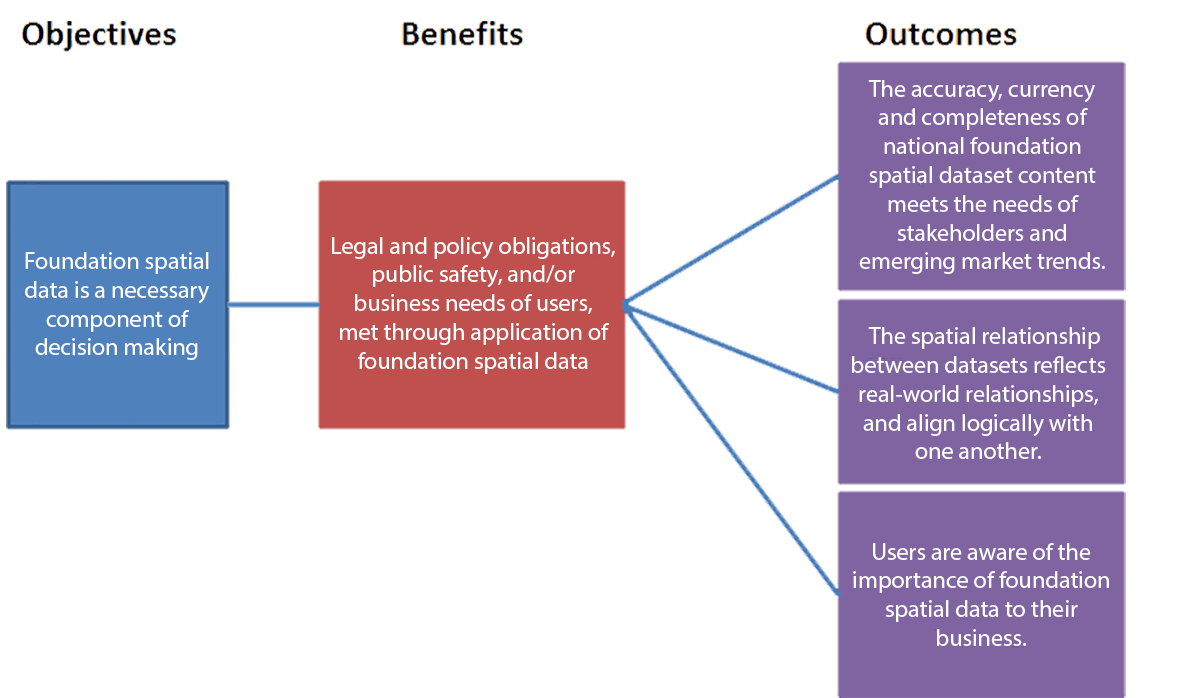The Foundation Spatial Data Framework has implemented benefits realisation management (BRM) (https://en.wikipedia.org/wiki/Benefits_realisation_management) as part of its program management methodology.
Benefits management is the very heart of the Foundation Spatial Data Framework. This program is driven by the need to deliver benefits to all key stakeholders (information suppliers, information aggregators, output owners and users). This is achieved by projects creating outputs, which build capabilities, which transition into outcomes that service the purpose of realising benefits to the FSDF organisation.
As well as helping the change program achieve what is need BRM will assist in keeping track of the time and resource investment contributed by various government stakeholders. A benefit is the measurable improvement resulting from an outcomes perceived as an advantage by one or more stakeholders. The FSDF has identified and agreed to specific benefits.
In the model above the following objects are defined and identified;
Project outputs; The task level outputs. The FSDF program management database lists over 1500 outputs relating to the change management program.
Business changes: Changes required in the business to achieve the Benefits.
Side effects; Consequences from the change program, sometimes unintended, that can have positive and negative implications and therefor need to be monitored.
Outcome; The results being aimed for. The FSDF has 16 Outcomes that summarise the 1500+ program outputs.
Benefits; Advantages to specific individuals or groups of individuals. The FSDF has 9 Benefits that are measured as part of the program.
Objectives; Statements that define the focus of the project and how it links to investment drivers. The FSDF has 9 Objectives that relate to ANZLIC Strategic Objectives outlined in its Strategic Plan.
Vision: The single unifying statement that describes the enterprise future state, intended to guide internal decision-making.

